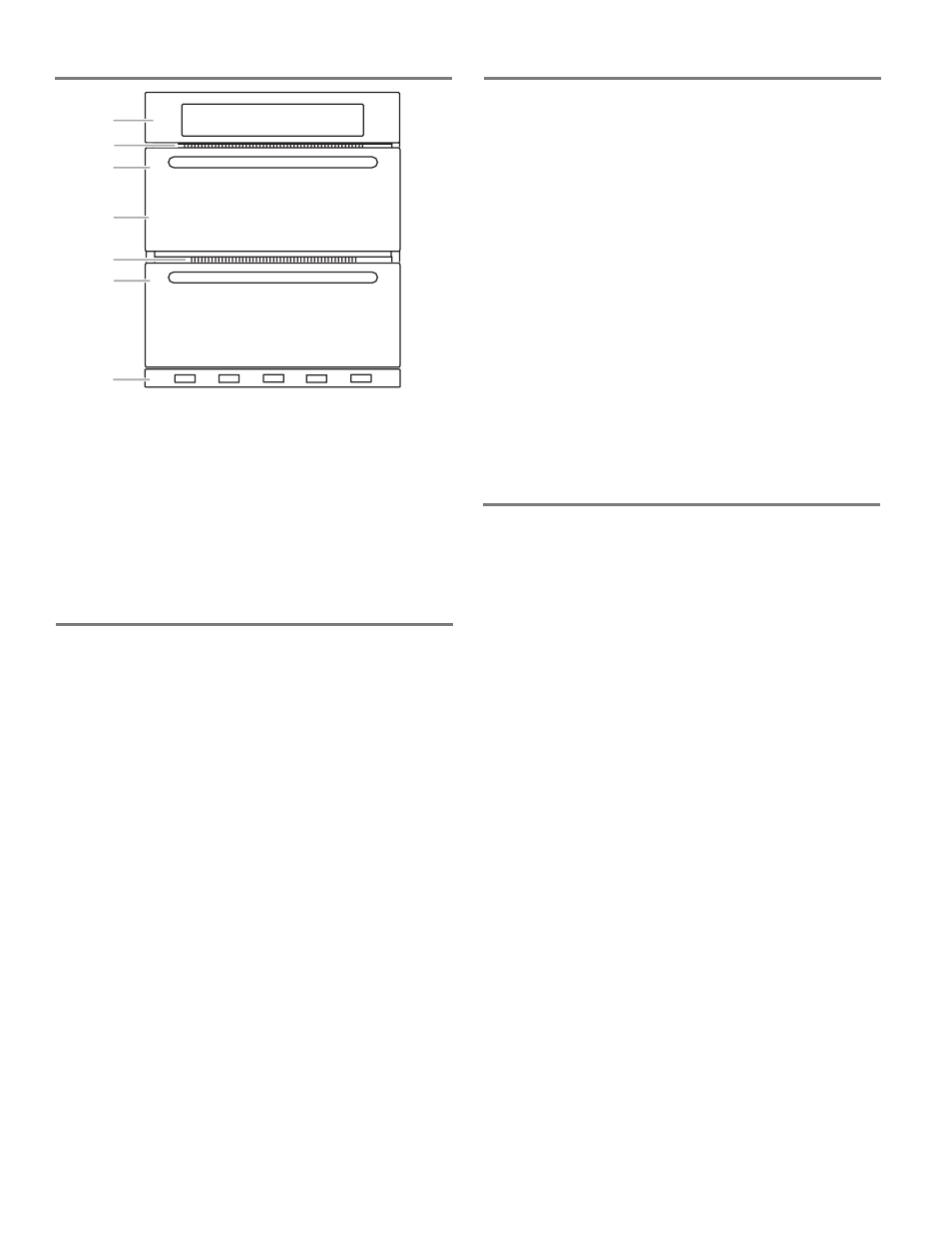Oven vents, Preheating and oven temperature, Baking and roasting – JennAir Euro-Style Series 30 Inch Single Convection Smart Electric Wall Oven User Guide User Manual
Page 12: Broiling

12
Oven Vents
E
D
F
B
A
C
G
Single and Double Oven
A. Control panel
B. Oven vent
C. Single oven or upper
double oven
G. Bottom vent
Double Oven
D. Upper oven
E. Oven vent
F. Lower oven
G. Bottom vent
The oven vents should not be blocked or covered since they
allow the inlet of fresh air into the cooling system and allows the
venting of heated air. Blocking or covering vents will cause poor
air circulation, affecting cooking, cleaning, and cooling results.
Preheating and Oven Temperature
Preheating
When beginning a Bake or Convect Bake cycle, the oven
begins preheating after Start is pressed. The oven will take
approximately 12 to 17 minutes to reach 350°F (177°C) with
all of the oven racks provided with your oven inside the oven
cavity. Higher temperatures will take longer to preheat. The
preheat cycle rapidly increases the oven temperature. The
actual oven temperature will go above your set temperature
to offset the heat lost when your oven door is opened to insert
food. This ensures that when you place your food in the oven,
the oven will begin at the proper temperature. Insert your food
when the preheat tone sounds. Do not open the door during
preheat until the tone sounds.
NOTE:
If the cook timer is set and the oven door is opened
during preheating, the timer will automatically start.
Oven Temperature
While in use, the oven elements will cycle on and off
as needed to maintain a consistent temperature. They may
run slightly hot or cool at any point in time due to this cycling.
Opening the oven door while in use will release the hot air
and cool the oven which could impact the cooking time and
performance. It is recommended to use the oven light to
monitor cooking progress.
Baking and Roasting
IMPORTANT:
The convection fan and convection element
may operate during the Bake function to enhance performance
and heat distribution.
The oven will take approximately 12 to 17 minutes to reach
350°F (177°C) with all oven racks inside the oven cavity. The
preheat cycle rapidly increases the temperature inside the oven
cavity. Higher temperatures will take longer to preheat. Factors
that impact preheat times include room temperature, oven
temperature, and the number of racks. Unused oven racks
can be removed prior to preheating your oven to help reduce
preheat time. The actual oven temperature will go above the
set temperature to offset the heat lost when the oven door is
opened to insert food. This ensures that the oven will begin at
the proper temperature when you place food in the oven. Insert
food when the preheat tone sounds. Do not open the door
during preheat until the tone sounds.
During baking or roasting, the bake and broil elements will cycle
on and off in intervals to maintain the oven temperature.
Depending on the model, if the oven door is opened during
baking or roasting, the heating elements (bake and broil) will
turn off approximately 30 seconds after the door is opened.
They will turn on again approximately 30 seconds after the
door is closed.
Broiling
Broiling uses direct radiant heat to cook food.
The element cycles on and off in intervals to maintain
the oven temperature.
NOTE:
No preheating is required for the Broiling function.
IMPORTANT:
Close the door to ensure proper broiling
temperature.
If the oven door is opened during broiling, the broil element
will turn off in approximately 30 seconds. When the oven
door is closed, the element will come back on approximately
30 seconds later.
■
For best results, use a broiler pan and grid. It is designed
to drain juices and help avoid spatter and smoke.
■
For proper draining, do not cover the grid with foil.
The bottom of the broiler pan may be lined with aluminum
foil for easier cleaning.
■
Trim excess fat to reduce spattering. Slit the remaining fat
on the edges to avoid curling.
■
Pull out oven rack to stop position before turning or
removing food. Use tongs to turn food to avoid the loss
of juices. Very thin cuts of fish, poultry or meat may not
need to be turned.
■
After broiling, remove the pan from the oven when
removing the food. Drippings will bake on the pan
if left in the heated oven, making cleaning more difficult.
